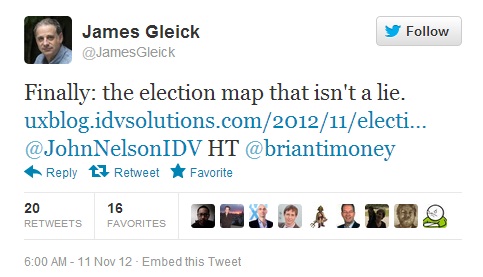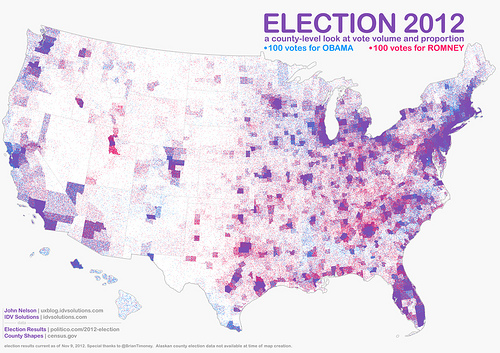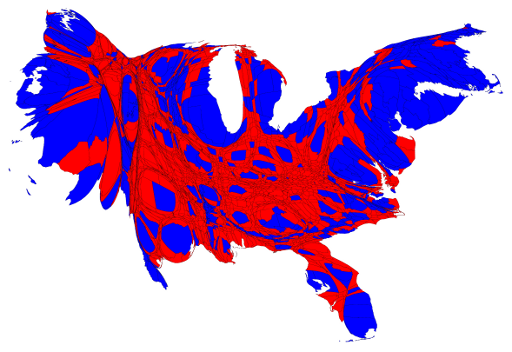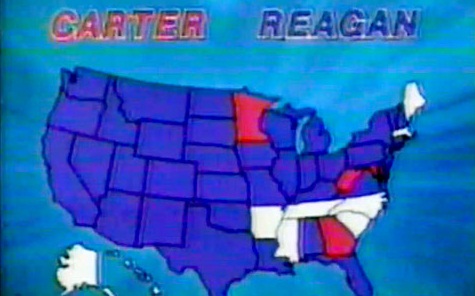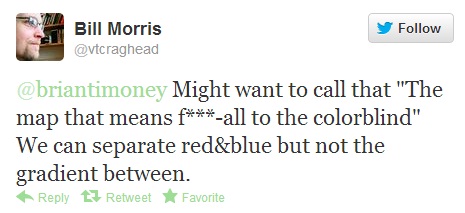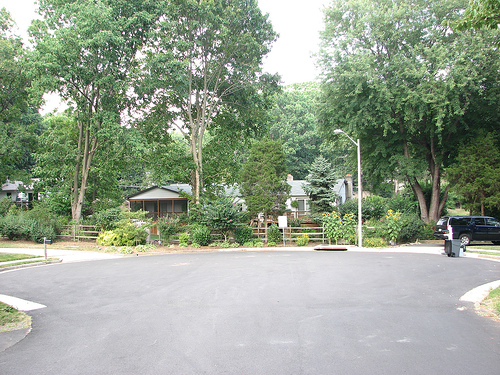With the arrival of autumn my Saturday afternoon meditative trinity of couch, college football, and napping is occasionally interrupted by one of those IBM Smarter Cities commercials. Though I’m generally irritated by anyone cheerfully telling me they’re building a “smarter planet”, I find the case studies interesting enough for 30 seconds of my attention. Their website has additional info on their urban problem-solving–infrastructure, public safety, education, etc.–invoking terms such as sensors, analytics, and modeling. You know what term doesn’t come up in their pitch?
GIS
Despite the inherently spatial nature of their problem solving, when smart, handsomely remunerated folks such as IBM show little interest in an acronym that supposedly defines an industry, I take notice.
How then are we to reconcile the increasing prominence of mapping with the ever-more-obvious inadequacy of the ‘GIS’ acronym?
GIS as a Desktop Paradigm
We all learned the textbook definition of GIS being a system of storing, manipulating, analyzing, and displaying geographic information. In a workstation/PC world, having these disparate functions in one place made eminent sense. With the ascent of the web, and now mobile, GIS has remained a steadfastly desktop paradigm with its nested-menu workflows, file-based data management, export-to-PDF outputs. To be clear, this market isn’t going away: indeed the embrace of the GIS paradigm by state/local government + DoD/DHS mean a continuing stream of entry-level analyst jobs calling for tasks that haven’t changed dramatically in 10-15 years. When a vendor touts new Excel-to-map functionality in 2012, it’s like Microsoft MapPoint 2003 never happened, let alone that little beta project known as Google Fusion Tables.
Geodatabase Management is to Database Management as Military Music is to Music
The continued presence of GIS database middleware in an era where SQL Server, Oracle, and Postgresql/PostGIS all come equipped with native spatial capabilities (the latter two handle raster) has important consequences. First, DBAs in IT want nothing to do with GIS implementations mediated by quirky middleware. So all of that training and background in database management best practices, etc. doesn’t reach the GIS department. Instead some GIS analyst with time-in-grade but with little database background and less SQL, is “managing” geospatial data via wizards and dialog windows. In our era of “endorsed skills” in LinkedIn, GIS remains the only branch of IT where folks talk confidently of database experience without having a rudimentary grasp of SQL, let alone views, triggers, and other everyday DBA tasking.
The Enterprise has Yet to Reckon With the Costs of the GIS Silo
…and they’re staggering.
We talked about geospatial having its own special databases siloed off from IT’s primary database cluster. But let’s not kid ourselves: what ends up in the geodatabase is a fraction of an enterprise’s valuable spatial data. Behold the typical C:\ drive in a GIS shop: shapefiles, MrSID files, and linked Excel spreadsheets ( attributes!). Because that’s where we do our everyday work (“what if the SDE goes down?”).
In the Utilities and Oil & Gas sectors, they talk about the “Big Crew Change” when the Baby Boom cohort retires en masse. Leave aside the institutional knowledge and the informal know-how that only comes from experience: think of the disk drives. Tens of millions of dollars worth of information left behind as files fall innocent victims of lax data management inside the GIS silo.
GIS Doesn’t Grok the Web
Try finding the “authoritative” version of your property boundary on the Internet. Your county has an enterprise geodatabase and a bewildering map portal, that may or may not be linked from the local gov homepage that channels www.yahoo.com circa 1997. How about Googling your address? Sorry, real estate folks figured out the web long before GIS people, and they have the SEO to prove it. Web users come to us for (quick) information, but instead we too often we give them…
Geographic-Information-System in-a-browser™
When Google Earth and Google Maps stormed onto the scene, GIS professionals sniffed that it wasn’t “real GIS”. Of course, Google proved the masses didn’t mind that it wasn’t real GIS–whatever that was–and their basemaps and new easy-to-use file format KML led the web mapping revolution. GIS seems slowly to be letting go of their fascination with portals by making it easier to publish to the web directly from, you guessed it, the desktop.
With wizards and such.
The GIS Career Trajectory Ends Up In a Cul-de-Sac
By all accounts, GIS is a “hot” field: especially with the DoD/DHS post 9/11 environment, entry opportunities abounded. Leave aside what’s happening with government budgets at all levels, simply sidle up to an industry veteran between, say 35 and 45, and simply ask “how’s it going?” Because the fork in the mid-career road leads to either “Programmer/Developer” or “Project Manager”. And because GIS operates in its own silo-ed world away from IT, you might have worked with geodatabases but don’t know SQL or may have published web maps but don’t know much Javascript/CSS. Suddenly spatial doesn’t feel so special.
This announcement or GIS Coordinator in Steamboat Springs is all too typical: a variety of disparate responsibilities and a large breadth of technology with a salary that doesn’t make it to $60K. But look at the requirements for SDE Administration and Versioning. Imagine instead whether had experience in administering an Oracle Spatial database using SQL and mainstream DBA practices. A few years of that under your belt and you’re looking at $90K plus you’re liberated from the expectation of administering the HP Plotter (as listed in the above job announcement). The GIS silo: relatively painless to enter, but an all-too-easy place to stagnate.
Who Will Tell The Kids the Future is in Databases, Algorithms, and Visualization?
Anyone who works in technology has to be prepared to be whip-lashed by change. But those who make money imparting wisdom and skills to the younger generation have a particular obligation recognize the contours of the new landscape. I sense that students planning to enter the job market of 2014 will be largely equipped with a 2004 set of problem-solving skills. This will be the subject of a future post.
* * * * * * *
An Acronym Falls Victim to the Law of Diminishing Returns
Spatial analysis,”location”, “geospatial”, and mapping will only increase in prominence and importance. But to continue to jam all of that manifold possibility into a fusty, catch-all acronym may serve as a convenient marketing hook, but the costs to our companies and our careers of this self-limiting definition of what we do are too significant to ignore.
The future has a way of arriving on one’s doorstep without calling ahead, albeit not neatly packaged nor clearly labelled.
—Brian Timoney
